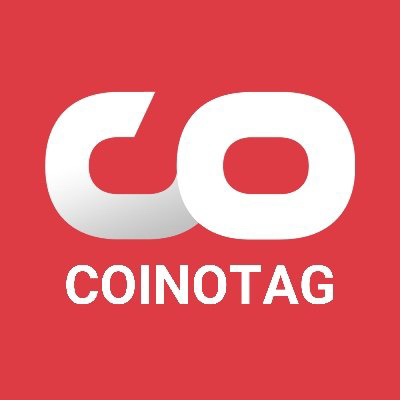
Pendle pricePENDLE
PENDLE/USD price calculator
Pendle market Info
Live Pendle price today in USD
Do you think the price of Pendle will rise or fall today?
Now that you know the price of Pendle today, here's what else you can explore:
How to buy Pendle (PENDLE)?How to sell Pendle (PENDLE)?What is Pendle (PENDLE)What would have happened if you had bought Pendle (PENDLE)?What is the Pendle (PENDLE) price prediction for this year, 2030, and 2050?Where can I download Pendle (PENDLE) historical price data?What are the prices of similar cryptocurrencies today?Want to get cryptocurrencies instantly?
Buy cryptocurrencies directly with a credit card.Trade various cryptocurrencies on the spot platform for arbitrage.Pendle price prediction
When is a good time to buy PENDLE? Should I buy or sell PENDLE now?
What will the price of PENDLE be in 2026?
In 2026, based on a +5% annual growth rate forecast, the price of Pendle(PENDLE) is expected to reach $1.85; based on the predicted price for this year, the cumulative return on investment of investing and holding Pendle until the end of 2026 will reach +5%. For more details, check out the Pendle price predictions for 2025, 2026, 2030-2050.What will the price of PENDLE be in 2030?
About Pendle (PENDLE)
What Is Pendle (PENDLE)?
Pendle is a DeFi protocol that facilitates yield-trading on both the Avalanche and Ethereum blockchains. Avalanche is a decentralized platform that offers open smart contract functionality. With Pendle, users can trade and tokenize future yield, which serves as collateral for various products. The protocol is currently developing a native AMM that supports tokens with reducing time value, which is expected to expand the DeFi ecosystem and token pairs.
What Makes Pendle (PENDLE) Unique?
With Pendle, lenders can lock in future yield and generate additional yield while traders can gain exposure to future yield streams. This project offers several features, including accessibility, flexibility, and full on-chain support. The platform supports multiple assets and protocols, allowing users to manage their yield on one platform seamlessly. Users can deposit and withdraw their capital as per their suitability. The smart contracts maintain and verify all the transactions, offering complete transparency between the platform and users.
According to its whitepaper, the Pendle system works on three components: Tokenization of Yield, Pendle's Automated Market Maker (AMM), and Governance. Two tokens, OT and YT, are issued to tokenize future yield. The ownership token consists of transferrable underlying assets, while the future yield token represents entitlement to the future yield. Users can deposit YT and OT in the liquidity pools to receive PENDLE tokens and swap fees in return. Liquidity pools help users trade cryptocurrencies on decentralized exchanges (DEX).
What is the Pendle token?
The Pendle platform uses PENDLE as its utility token for governing the system. The team enables token governance, which includes allocating liquidity incentives, creating new market pairs, and managing treasury funds. PENDLE is an ERC-20 token that rewards long-term token holders and provides liquidity through initiatives like (Pe, P) and (Pa, P). These initiatives have three main goals: increasing PENDLE's liquidity, rewarding token holders for their contributions, and providing liquidity to the protocol.
Pendle (PENDLE) Price Prediction
It seems that analysts are predicting a significant increase in the value of Pendle in the coming years. According to their projections, the price of Pendle is expected to rise by 236.27% and reach $2.46 by the end of 2025. The current market sentiment appears to be bullish, and while the Fear Greed Index is currently reading 18.50 (which indicates extreme fear), all technical indicators point towards positive growth.
Bitget Insights




PENDLE/USD price calculator
PENDLE resources
What can you do with cryptos like Pendle (PENDLE)?
Deposit easily and withdraw quicklyBuy to grow, sell to profitTrade spot for arbitrageTrade futures for high risk and high returnEarn passive income with stable interest ratesTransfer assets with your Web3 walletWhat is Pendle and how does Pendle work?
Global Pendle prices
Buy more
FAQ
What is the current price of Pendle (PENDLE)?
How has the price of Pendle changed in the last week?
What factors influence the price of Pendle?
Where can I buy Pendle at the best price?
What is the market cap of Pendle and how does it affect the price?
Will the price of Pendle rise in the future?
What is the all-time high price of Pendle?
Are there any upcoming events that may affect Pendle's price?
How does Pendle compare to other DeFi projects in terms of price performance?
What trading pairs are available for Pendle on Bitget Exchange?
What is the current price of Pendle?
What is the 24 hour trading volume of Pendle?
What is the all-time high of Pendle?
Can I buy Pendle on Bitget?
Can I get a steady income from investing in Pendle?
Where can I buy Pendle with the lowest fee?
Related cryptocurrency prices
Prices of newly listed coins on Bitget
Hot promotions
Where can I buy Pendle (PENDLE)?
Video section — quick verification, quick trading









